Let’s face it—winter can leave gardens looking bare, tired, and a little bit sad. The lush greens of spring and the fireworks of autumn are long gone. But here’s the good news: with the right selection of winter-interest trees, your garden can be full of colour, and even fragrance—right through the colder months.
Winter is when good landscape design stands out. Without all the foliage to distract the eye, flowers, form, and bark take centre stage. That’s why winter is the perfect time to showcase standout specimens—trees that glow with white trunks, twist in unexpected ways, or push out blossoms when you least expect them.
And it’s not just about looks. Winter trees provide wildlife shelter, and set the stage for spring. Planting now means your trees will have time to establish before summer’s heat and reward you sooner than you think.
1. Camellia
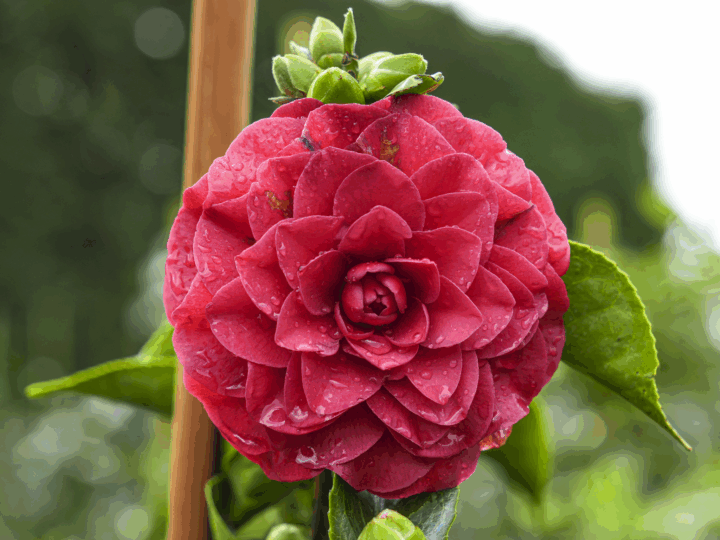
Blooms in: Late autumn to early spring
Nothing lifts a winter garden like Camellias. These evergreens offer bright winter garden colour just when you need it most—plus those glossy leaves stay lush year-round. Great for borders, entranceways, or under deciduous trees.
- Camellia japonica ‘Roger Hall’ – vibrant red flowers
- Camellia japonica ‘Nicky Crisp’ – soft pink blooms
- Camellia sasanqua ‘Setsugekka’ – single white flowers with golden centres
2. Michelia
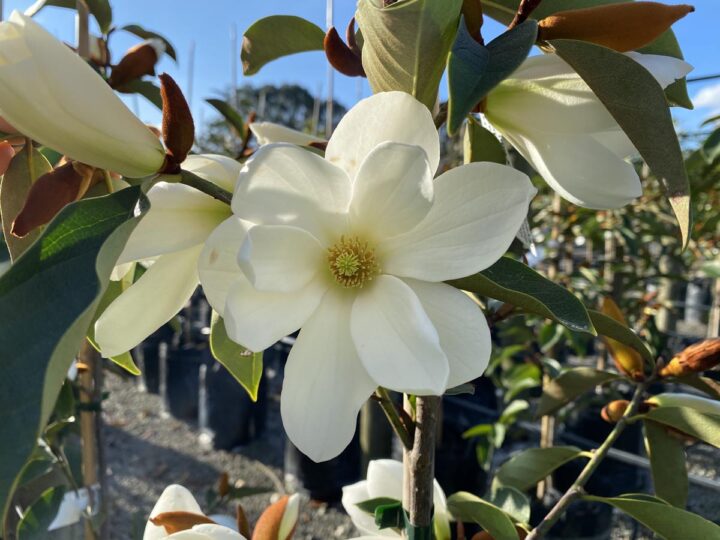
Blooms in: Late winter
Michelia trees (closely related to Magnolias) are evergreen, fragrant, and elegant. Use them as flowering screens or plant them near a path to enjoy their perfume up close.
- Michelia ‘Lemon Fragrant’ – compact, lemon-scented white flowers
- Michelia ‘Fairy Blush’ – glossy leaves and soft pink flowers
3. Magnolia
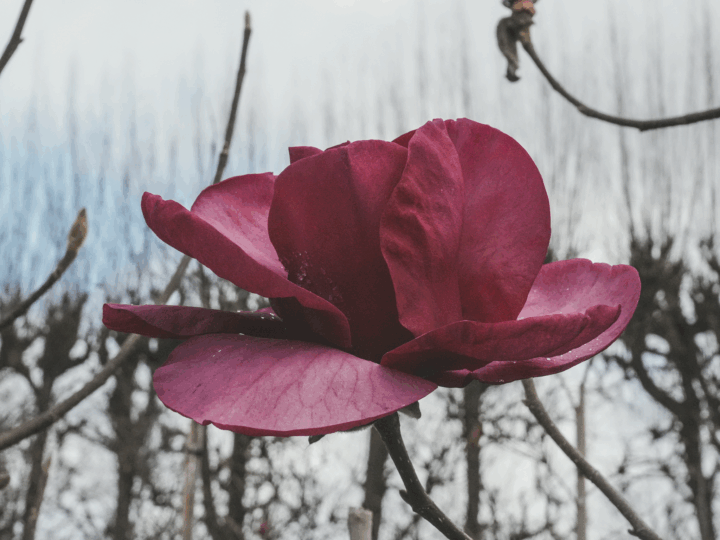
Blooms in: Late winter to early spring
Magnolias are real head-turners. Their large, bold flowers bloom on bare branches, creating a sculptural look that brings drama to winter landscapes.
- Magnolia stellata – delicate star-shaped flowers
- Magnolia ‘Felix’ – large, vibrant pink blooms
4. Japanese Maple (Acer palmatum)
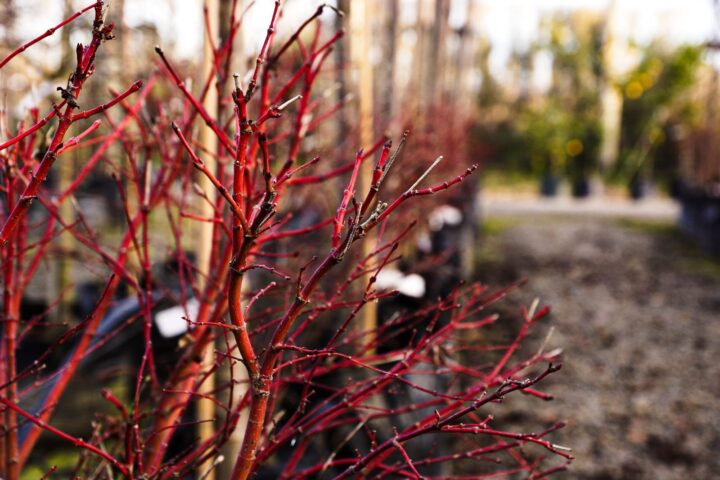
Even after they drop their leaves, some maples still steal the show. Look for varieties with coloured bark and intresting branching structure—perfect for framing views or planting near patios.
- Acer palmatum ‘Senkaki’ — coral-red bark adds standout winter colour.
- Acer palmatum ‘Fjellheim’ — compact form with rich autumn tones.
5. Silver Birch (Betula)
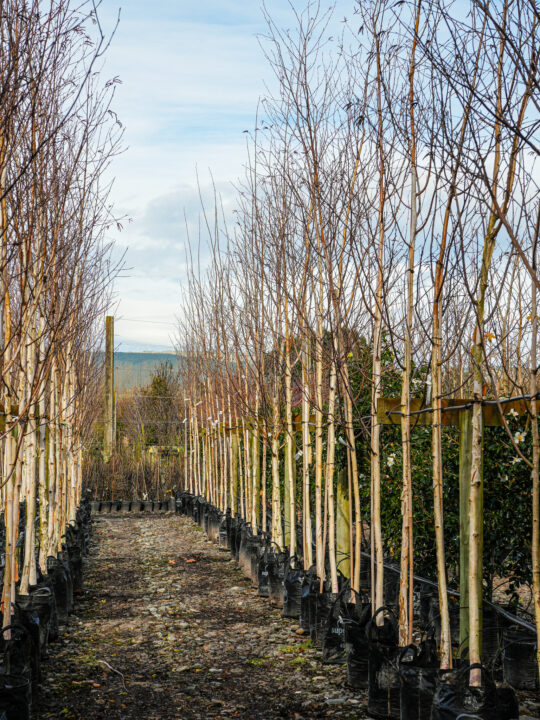
Few trees brighten a grey winter day like a Silver Birch. That paper-white bark catches the light, and their upright habit brings elegance to any space.
- Betula utilis subsp. jacquemontii – classic white bark
- Betula populifolia ‘Whitespire’ – upright and elegant
6. Manuka (Leptospermum scoparium)
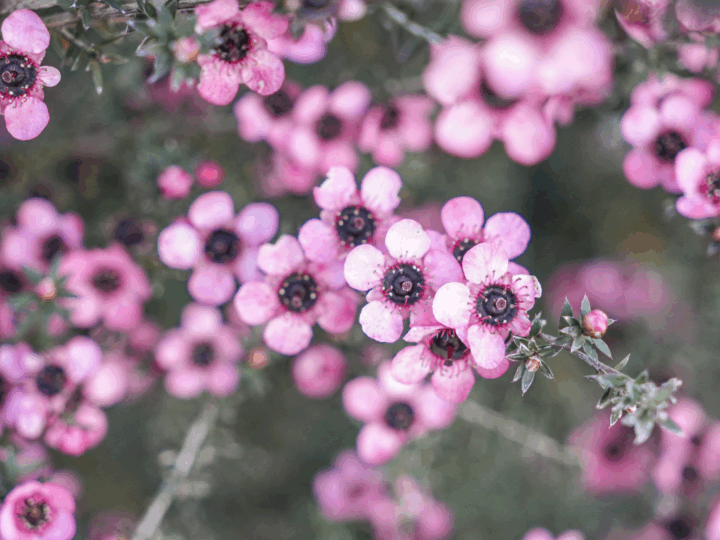
Blooms in: Late winter to early spring
This tough New Zealand native offers fine, evergreen foliage and delicate flowers when little else is blooming. Its subtle colour and movement bring softness to structured winter gardens—and pollinators love it too.
- Leptospermum scoparium ‘Wiri Shelley’ – compact and flowers abundantly
- Leptospermum scoparium ‘Princess Anne’ – upright with pink blooms
7. Dogwood (Cornus alba, Cornus sericea)
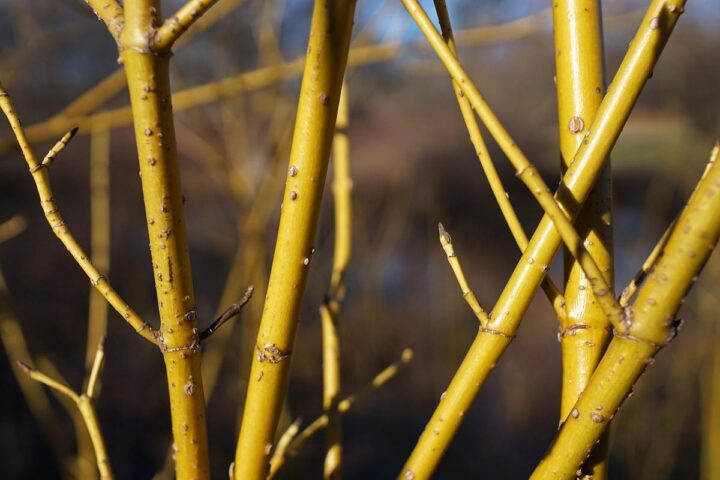
Some Dogwoods are famous for their winter bark. Once their leaves drop, the stems light up in fiery red or golden tones. Use them to add brightness to bare borders or mass plant for visual impact.
- Cornus alba ‘Sibirica’ – bright red stems
- Cornus sericea ‘Flaviramea’ – golden stems
8. Japanese Apricot (Prunus mume)
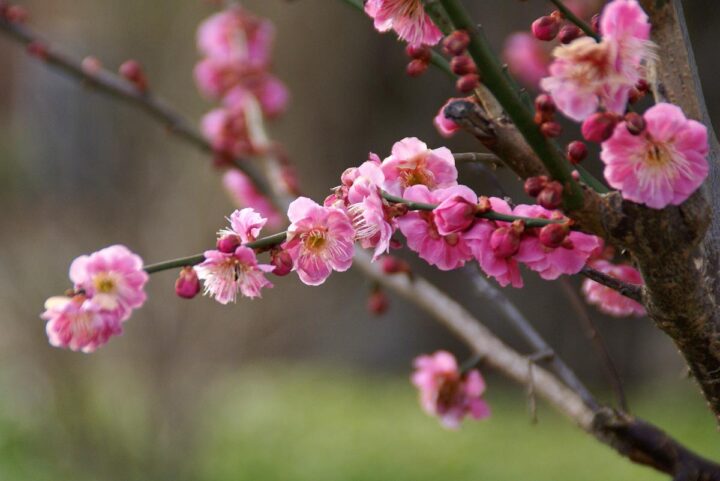
Blooms in: Mid to late winter
Prunus mume is one of the first trees to flower each year, bursting into blossom while everything else is still in hibernation. Its lightly scented, delicate blooms bring a soft touch to the coldest months.
- Prunus mume ‘The Geisha’ – soft pink fragrant blooms
9. Twisted Hazel (Corylus avellana ‘Contorta’)
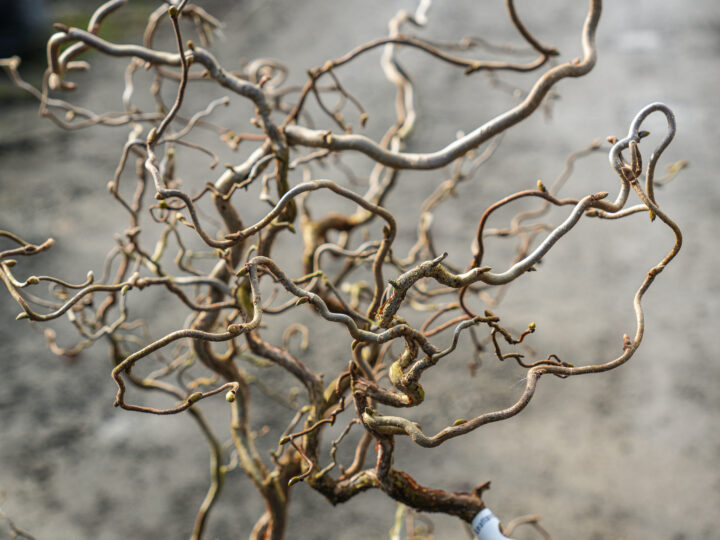
A true winter sculptural piece. This one’s all about shape—its curled and twisted branches look like something out of a fairytale. Stunning on its own or lit up with uplights.
- Corylus avellana ‘Contorta’ – eye catching twisted branches and catkins
10. Citrus
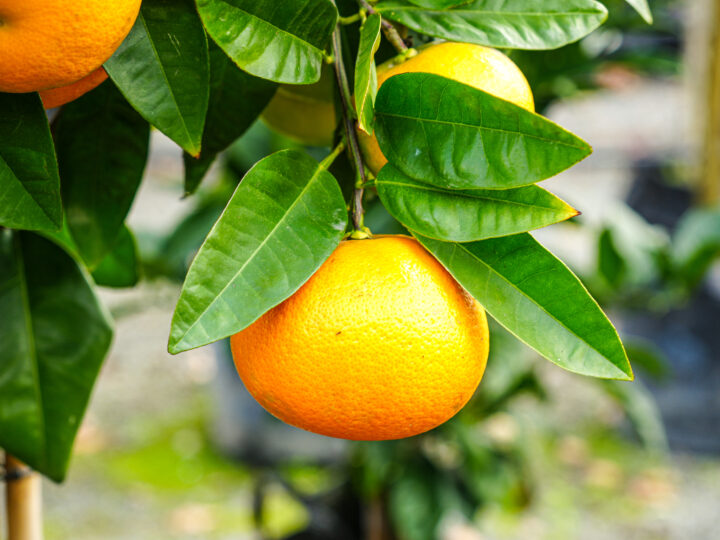
Yes—citrus trees really do shine in winter. While the garden rests, citrus steps up with glossy evergreen foliage, fragrant white blossoms, and bright fruit that adds colour. Perfect for pots, courtyards, or sunny garden beds.
- Citrus x paradisi ‘Cutlers Red’ – grapefruit variety
- Citrus x meyeri – lemon variety
11. Viburnum
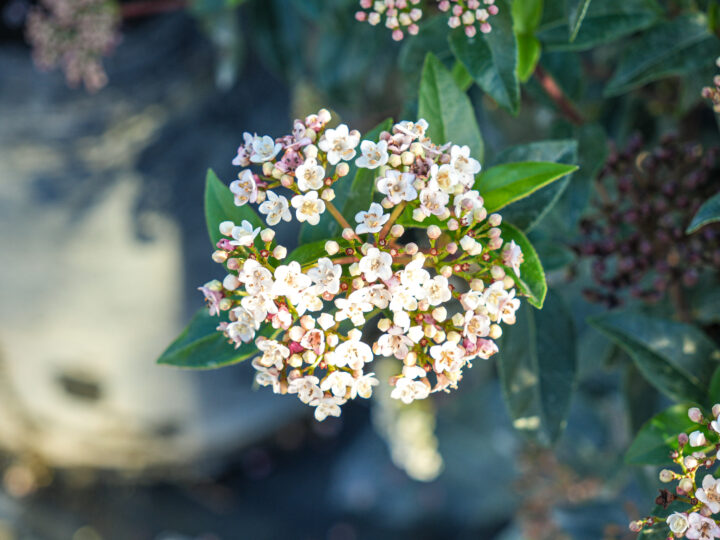
Blooms in: Mid-winter to early spring
A hardworking evergreen that brings soft seasonal colour. Viburnum tinus produces small pink buds that open into clusters of white flowers—providing gentle interest through the colder months. It’s also great for hedging and wildlife-friendly gardens.
- Viburnum tinus ‘Eve Price’ – tidy and flowers abundantly
Design Tips for Winter Garden Colour and Interest
- Mix it up: Combine evergreens, deciduous trees, and natives for a balanced, natural feel.
-
Focus on form: Winter is the season to show off shape and bark—plant with that in mind.
-
Go bold with bark: Use red- or gold-stemmed trees to brighten grey corners.
-
Think ahead: Plant in autumn to enjoy them during winter.
-
Light it up: Use outdoor lighting to highlight structure and texture after dark.
- Set the scene: Let evergreens provide the backdrop that lets winter shapes and colours stand out. Browse our Evergreen Trees→
Is Winter the Time to Plant? Absolutely.
Winter planting isn’t just possible—it’s ideal. Your trees will settle in more gently with less stress, and you’ll start seeing the rewards come early spring. Whether you’re planting for a client, your own garden, or a fresh landscape project, these trees will make winter your new favourite season. Read our Tree Planting Guide for expert tips on planting, care, and timing.
Ready to plant? Visit us or shop online now!